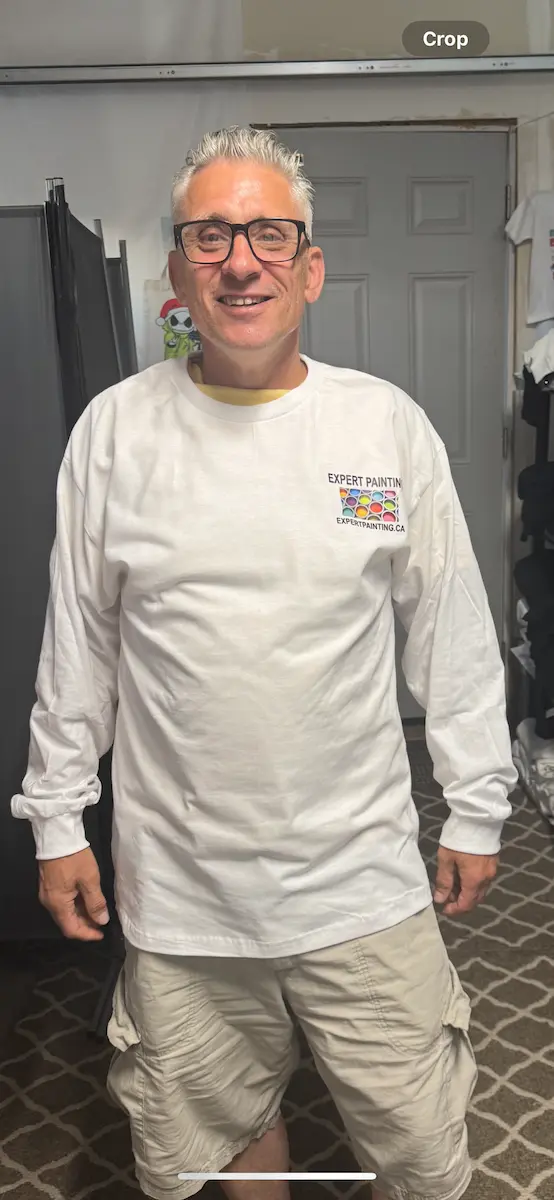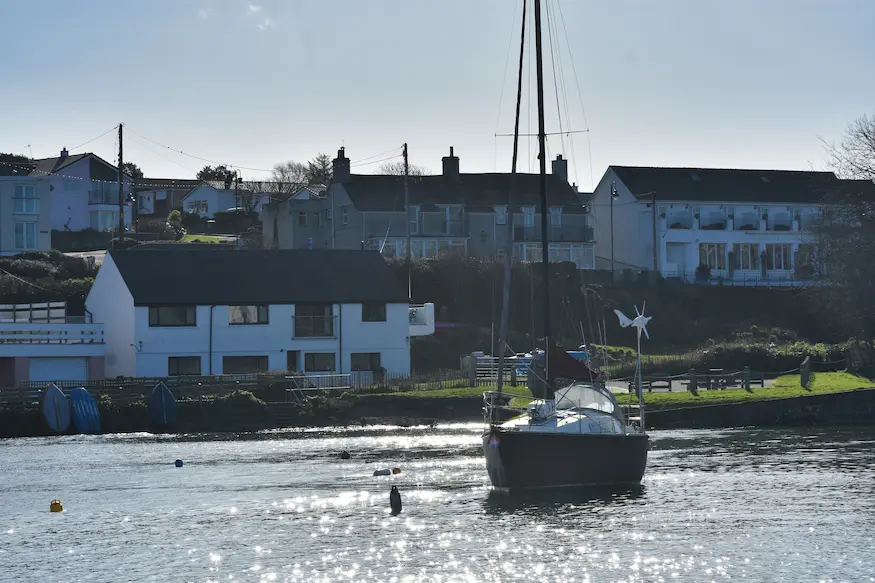Painting in Coastal Marine Environments: A Vancouver Island Guide
Learn how Campbell River's unique coastal climate affects your painting projects. Expert tips from Mike Sinclair on protecting your home from salt air, moisture, and Pacific storms.

Mike Sinclair
Paint it Right Team

After 15 years of painting homes along Vancouver Island’s rugged coastline, I’ve learned that our beautiful location comes with unique challenges. From the salt-laden winds off the Strait of Georgia to the persistent Pacific moisture, coastal painting requires specialized knowledge and techniques.
Understanding Campbell River’s Coastal Climate
Campbell River sits at the convergence of the Discovery Passage and the Strait of Georgia, creating a microclimate that significantly impacts exterior surfaces. Properties in areas like Willow Point, Ocean Grove, and along the Campbell River Spit face constant exposure to:
- Salt spray from ocean winds
- High humidity averaging 80% year-round
- Intense UV reflection off the water
- Frequent precipitation (over 1,400mm annually)
- Strong Pacific storms particularly October through March
The Salt Air Challenge
How Salt Affects Your Paint
Salt air is perhaps the most aggressive element we face on Vancouver Island. The microscopic salt particles:
- Penetrate paint films causing premature breakdown
- Accelerate corrosion on metal surfaces
- Create adhesion problems for new paint
- Leave deposits that trap moisture
Properties within 1-2km of the shoreline, including neighborhoods like:
- Oyster Bay
- Saratoga Beach
- Miracle Beach area
- Willow Point
- Campbell River Spit
…experience the most severe salt exposure and require extra attention.
Protection Strategies
To combat salt damage, we’ve developed specific protocols:
Surface Preparation
- Power wash with fresh water to remove salt deposits
- Use TSP (trisodium phosphate) solution for stubborn buildup
- Allow extra drying time (48-72 hours minimum)
- Apply salt-neutralizing primers
Product Selection
- Marine-grade primers with corrosion inhibitors
- 100% acrylic latex paints with high salt resistance
- Elastomeric coatings for maximum protection
- UV-resistant topcoats to combat intense coastal sun
Moisture Management in Our Wet Climate
Vancouver Island’s persistent moisture creates ideal conditions for:
- Wood rot
- Mildew and mold growth
- Paint blistering and peeling
- Substrate deterioration
Critical Areas to Address
North-Facing Walls These surfaces receive minimal sun and stay damp longer, especially during our wet season (October-April). Properties backing onto forested areas in neighborhoods like Rockland or near Elk Falls Provincial Park need extra attention.
Foundation Areas With Campbell River receiving significant rainfall, proper drainage and moisture barriers are essential before painting.
Deck and Fence Surfaces Horizontal surfaces trap moisture and require specialized stains and sealers designed for our climate.
Timing Your Project: Working with Island Weather
Best Painting Months
Based on local weather patterns, optimal exterior painting windows are:
Primary Season: May through September
- Lower precipitation
- Moderate temperatures (15-25°C)
- Reduced humidity
- Calmer winds
Secondary Windows
- Early October (before storm season)
- Late March/April (weather dependent)
Daily Timing Considerations
Morning Challenges
- Heavy dew common until 10-11 AM
- Fog frequent in coastal areas
- Allow surfaces to fully dry
Afternoon Advantages
- Peak painting hours: 11 AM - 5 PM
- Monitor wind speeds (common afternoon breezes)
- Watch for sudden weather changes
Special Considerations for Different Areas
Oceanfront Properties
Properties along the coast from Oyster River to Shelter Point require:
- Annual touch-ups on high-exposure areas
- Premium marine-grade products
- More frequent maintenance cycles (5-7 years vs. 10-12 inland)
Properties Near Forests
Homes backing onto green spaces (common in Campbell River) face:
- Higher moisture retention
- Organic growth (moss, algae)
- Tree sap and pollen deposits
- Reduced air circulation
Downtown and Tyee Spit Area
Commercial and residential properties here experience:
- Salt spray from the harbor
- Industrial particulates
- Higher traffic pollution
- Vandalism concerns
Product Recommendations for Coastal Success
Through extensive testing in our local conditions, we recommend:
Primers
- Benjamin Moore Fresh Start® High-Hiding Primer: Excellent salt resistance
- Sherwin-Williams Loxon® Concrete & Masonry Primer: For stucco and concrete
- Dulux Weathershield® Primer: Specifically formulated for coastal environments
Paints
- Cloverdale WeatherPRO-TECT™: Local favorite with proven performance
- Benjamin Moore Regal® Select Exterior: Superior adhesion and flexibility
- Dulux Diamond Exterior: Maximum durability for harsh conditions
Specialty Coatings
- Elastomeric coatings for stucco homes
- Marine varnishes for wood trim
- Anti-graffiti coatings for commercial properties
Maintenance: The Key to Longevity
Annual Inspection Checklist
Every spring, inspect:
- South and west-facing walls (maximum UV exposure)
- Window and door trim
- Deck railings and horizontal surfaces
- Foundation areas
- Under eaves and soffits
Preventive Maintenance
Quarterly
- Rinse salt deposits with fresh water
- Clean gutters to prevent overflow staining
- Check and touch up high-wear areas
Annually
- Professional pressure washing
- Re-caulk gaps and cracks
- Apply protective coatings to vulnerable areas
Case Study: Oceanfront Home in Willow Point
Last summer, we transformed a 1970s cedar-sided home facing Discovery Passage:
Challenges:
- Severe salt damage on west wall
- Extensive weathering on cedar shakes
- Previous paint failure after only 3 years
Our Solution:
- Complete removal of failed coating
- Cedar restoration and treatment
- Application of penetrating oil primer
- Two coats of premium solid stain
- Clear protective topcoat on high-exposure areas
Result: After 18 months, the finish looks nearly new despite facing two major storm seasons.
Investment in Quality Pays Off
While coastal painting requires premium products and meticulous preparation, the investment protects your most valuable asset. Properties maintained properly in Campbell River’s marine environment:
- Retain higher resale values
- Require less frequent repainting
- Avoid costly structural repairs
- Maintain better curb appeal
Local Resources and Timing
Weather Monitoring
- Check Environment Canada marine forecasts
- Monitor tide tables for spray conditions
- Use weather windows effectively
Local Paint Suppliers We work with quality suppliers who understand our unique needs:
- Cloverdale Paint (Dogwood Street)
- Dulux Paints (Island Highway)
- Local Benjamin Moore dealers
Conclusion: Embracing Our Coastal Challenge
Living on Vancouver Island means accepting that our homes face some of Canada’s most challenging painting conditions. But with proper preparation, quality products, and regular maintenance, we can protect and beautify our properties for decades.
At Paint it Right, we’ve spent over a decade perfecting techniques specifically for Campbell River’s coastal environment. We understand that each property faces unique challenges based on its proximity to water, exposure direction, and surrounding landscape.
Whether your home overlooks Discovery Passage, nestles in the forests of Rockland, or sits downtown near the harbor, we have the expertise to protect it from our beautiful but demanding coastal climate.
Contact us for a free consultation and let’s discuss how to best protect your Vancouver Island investment from the elements while maintaining its beauty for years to come.
